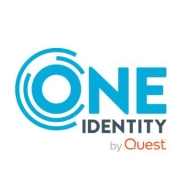


One Identity Manager and IBM Security Verify Access are products in the identity and access management space. Data comparisons show IBM Security Verify Access has a stronger feature set, making it more appealing despite One Identity Manager's favorable pricing and support satisfaction.
Features: One Identity Manager has solid automation capabilities, identity lifecycle management, and integrates well with Boomi solutions. IBM Security Verify Access stands out with robust access management, adaptive authentication, and advanced security policies, offering a comprehensive feature set for complex security needs.
Room for Improvement: One Identity Manager could improve in scalability, ease of customization, and simplifying complex integrations. IBM Security Verify Access may benefit from streamlining its setup process, enhancing user interface design, and reducing integration time for custom solutions.
Ease of Deployment and Customer Service: One Identity Manager is known for straightforward deployment and efficient customer support that helps with system integration. IBM Security Verify Access provides extensive documentation and support but involves a complex setup process that requires significant technical expertise.
Pricing and ROI: One Identity Manager is a cost-effective choice with competitive setup costs and higher return on investment due to lower total cost of ownership. IBM Security Verify Access incurs higher initial costs but offers substantial long-term value for companies that require advanced security features.



Omada Identity is an identity governance and administration (IGA) solution designed to help organizations manage and secure digital identities and access across their IT environments. It focuses on enhancing security, compliance, and efficiency by automating identity management processes.
Omada Identity offers a robust set of features that streamline identity lifecycle management, access governance, and compliance reporting. It integrates with a wide range of IT systems, applications, and data sources, providing a centralized platform for managing user identities and access rights. The solution enables organizations to enforce security policies, ensure regulatory compliance, and reduce the risk of unauthorized access.
What are the critical features of Omada Identity?
What benefits or ROI items should users look for in the reviews when evaluating Omada Identity?
Omada Identity is widely adopted across various industries, including healthcare, finance, and manufacturing. In healthcare, it helps protect patient data and comply with regulations like HIPAA. In finance, it ensures compliance with SOX and other financial regulations. In manufacturing, it secures access to sensitive production data and intellectual property.
Pricing and licensing for Omada Identity are typically based on the number of users and the specific features required. Customer support is available through various channels, including online resources, support tickets, and professional services for implementation and customization.
In summary, Omada Identity is a comprehensive IGA solution that enhances security, compliance, and efficiency in managing digital identities and access.
IBM Security Verify Access is a complete authorization and network security policy management solution. It provides end-to-end protection of resources over geographically dispersed intranets and extranets.Provides a wide range of built-in authenticators and supports external authenticators.Provides permit and deny decisions for protected resources requests in the secure domain through the authorization API.Manages secure access to private internal network-based resources by using the public Internet's broad connectivity and ease of use with a corporate firewall system.
One Identity Manager is a value-added and trusted active directory management and user provisioning software solution. One Identity Manager administers and protects an organization’s data and users, minimizes threats, and ensures that compliance regulations are consistently satisfied.
Users will have access to the data and applications they need when they need them. One Identity can be used on premises, in the cloud, and also with hybrid options. One Identity Manager is able to easily combine strict governance compliance regulations and rigorous security protocols to keep business enterprises secure and functional today and into the future. One Identity Manager is also a robust, scalable identity governance and administration (IGA) solution. The solution is designed to meet the changing needs of a growing dynamic business enterprise, and not be limited or left vulnerable by IT department constricts.
One Identity consistently provides robust security solutions that facilitate a strong secure enterprise where the users, applications, and critical data are safe and secure. The unified identity security platform provides identity governance and administration (IGA), privileged access management (PAM), active directory management and security (ADMS), and identity and access management (IAM) processes to ensure an aggressive stance on security for today’s dynamic enterprise organizations.
One Identity is used by more than 11,000 organizations worldwide managing over five hundred million plus identities.
One Identity Manager Features
Reviews from Real Users
“The initial setup process for an employee is straightforward. We set up processes for user accounts and we can add other processes to them. Our goal is to automate all user-permission and user-administration processes with One Identity and we are doing that more and more.” - Marc H., IT Architect at a tech services company
“The most valuable features are that it has a lot of capabilities, can integrate with a lot of systems, including automated onboarding like CyberArk, and allows you to integrate different entities.” - Security Consultant at a financial services firm
We monitor all Identity Management (IM) reviews to prevent fraudulent reviews and keep review quality high. We do not post reviews by company employees or direct competitors. We validate each review for authenticity via cross-reference with LinkedIn, and personal follow-up with the reviewer when necessary.